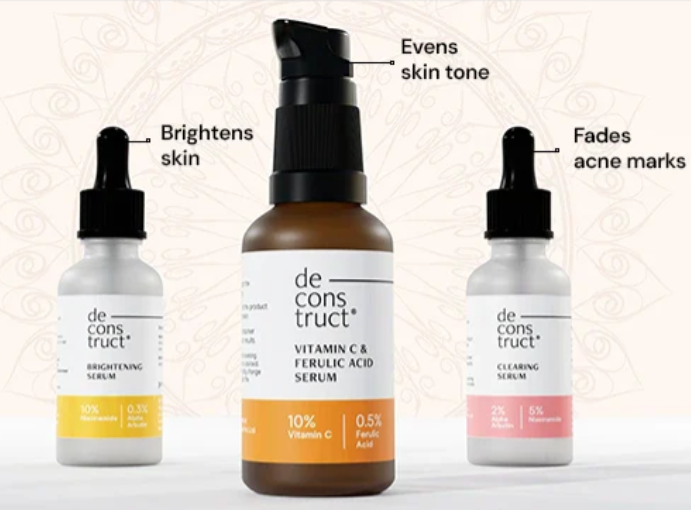If you’re into skincare, you’ve probably heard a lot about Niacinamide and Vitamin C. These two ingredients are super popular in serums, moisturizers, and even face masks. But there’s also a lot of confusion around them—especially one big question:
“Can I use Niacinamide and Vitamin C together?”
Let’s clear it up once and for all.
First, What Are Niacinamide and Vitamin C?
Before we talk about using them together, let’s quickly understand what they do.
Niacinamide (Vitamin B3)
Niacinamide is a form of Vitamin B3. It is known for:
- Controlling oil production
- Reducing the appearance of pores
- Fading acne marks and pigmentation
- Strengthening the skin barrier
- Calming irritated skin
It’s suitable for all skin types, especially oily, acne-prone, and sensitive skin. If you live in a humid place like Mumbai or Chennai, niacinamide can help a lot.
Vitamin C (Ascorbic Acid)
Vitamin C is a powerful antioxidant that helps:
- Brighten dull skin
- Fade dark spots and pigmentation
- Boost collagen production
- Fight free radicals from sun and pollution
It’s great for anyone who wants glowing, even-toned skin. However, it can sometimes cause irritation, especially if you have sensitive skin.
Why People Say Not to Use Them Together
There’s an old skincare myth that Niacinamide and Vitamin C cancel each other out or cause irritation when layered together. This confusion started with outdated research done many years ago.
But here’s the truth:
Modern dermatology says it’s absolutely safe to use both together.
In fact, many well-known brands now make serums that combine both ingredients in one bottle. Science and skincare have come a long way!
Can You Really Use Them Together? YES. Here’s How.
If used correctly, Niacinamide and Vitamin C can work beautifully together. They can actually boost each other’s results.
Benefits of Using Both:
- Double the power to reduce pigmentation
- Brighter, clearer skin over time
- Fewer breakouts and post-acne marks
- Improved skin texture and tone
The Right Way to Use Them:
There are three safe ways to include both in your skincare routine:
Option 1: Use Them at Different Times of the Day
- Morning: Vitamin C serum (followed by sunscreen)
- Night: Niacinamide serum
This method is great for beginners or those with sensitive skin. You get all the benefits without the risk of irritation.
Option 2: Layer Them in the Same Routine
If your skin can tolerate it, you can use:
- Vitamin C first (let it absorb for 1–2 minutes)
- Then apply Niacinamide serum
This works well if you’re using low to medium concentrations (e.g., 10% Niacinamide, 10–15% Vitamin C). Always do a patch test first!
Important Tips When Using Both
- Always Use Sunscreen
– Vitamin C works best when protected by sunscreen. It helps prevent more pigmentation from sun exposure. - Start Slow
– If you’re new to active ingredients, don’t use them both daily from day one. Start with alternate days and slowly increase frequency. - Watch for Irritation
– If your skin feels itchy or red, stop and check the concentration. You may need a milder product or use them on different days. - Don’t Mix Too Many Actives
– If you’re already using retinol or exfoliating acids (like AHA/BHA), be cautious. Stick to a simple routine with fewer actives to avoid overdoing it.
Final Thoughts: Teamwork Makes the Dream Work!
So, Niacinamide vs. Vitamin C? It’s not a competition.
These two ingredients are better together when used properly. One helps brighten and protect your skin (Vitamin C), and the other keeps it calm, clear, and balanced (Niacinamide).
If you’re dealing with dullness, acne marks, pigmentation, or oily skin, including both in your routine could be a game changer.
You don’t need to find a product that mixes them — brands like Deconstruct offer separate, high-quality serums for both Niacinamide and Vitamin C. You can easily use them in the same routine or at different times of the day based on your skin’s needs.

